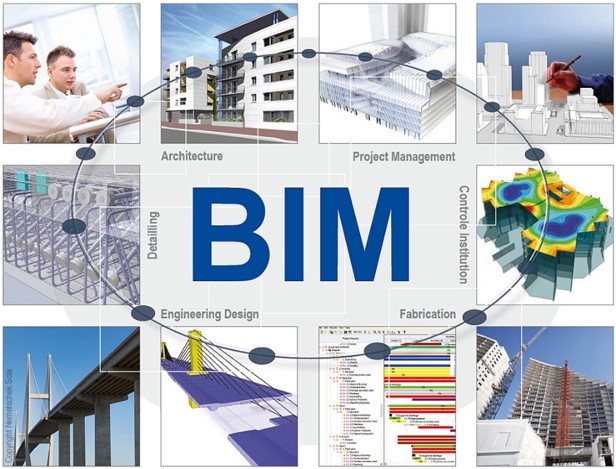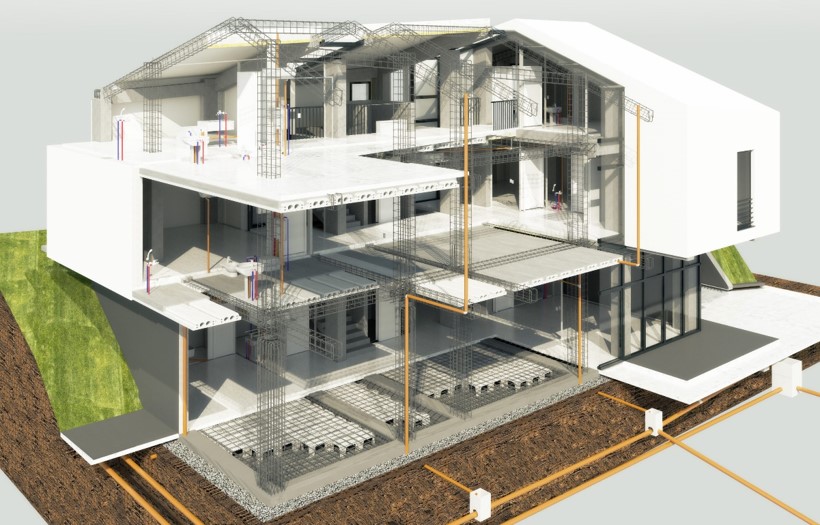BIM Application in Infrastructure Engineering Projects in Hong Kong
Dr Betty Chiu, Faculty of Science and Technology
Engineering infrastructure such as for roads and railways, is a key component to a city’s economic progression, security and well-being, and can significantly help economic and social development. Hong Kong is a metropolis located at the south-eastern tip of China. It has an exceptionally high building density - more than 40,000 buildings over a land area of 1,106 square kilometres (HAD, 2019; HKSAR Government, 2019). With Hong Kong’s ever-increasing population growth, more efficient and cost-effective technologies to build new infrastructures, and to maintain, monitor and repair existing ones are needed. One of these technologies is known as Building Information Modelling (BIM), the development and use of computer software models for managing and integrating specific project designs together with data obtained in the project life cycle.

Example uses of BIM
BIM is widely adopted in civil engineering projects in many overseas countries, such as France (with 81% of its projects using BIM), USA (76%), UK (76%) and Germany (74%) (Dodge Data Analytics, 2017). However, the adoption pace of BIM in the infrastructure sector in Hong Kong has been relatively slow, with less than 30% of organizations adopting BIM in engineering projects (CIC, 2019). To explore this problem, Dr Betty Chiu of the Faculty of Science and Technology conducted a survey study in March 2020. An online questionnaire was disseminated to around 20 engineers from several companies to seek their professional opinions of BIM adoption, the benefits and barriers. The questionnaire was then modified for a large-scale data collection. A total of 60 engineers from professional institutions and companies completed the online questionnaire. The participants comprised of members from the Hong Kong Institute of Engineers (HKIE) (75%), and/or the Chartered Institution of Highways and Transportation (18%); and a small portion of participants were from related professional organisations (5%), such as the Institution of Civil Engineers, Hong Kong Institute of Surveyors, etc.
The findings revealed that the adoption of BIM in the infrastructure engineering sector had reached a level where using 3D drawings was a common practice, especially for data management purposes. However, the participants stated that less than 30% of infrastructure engineering projects implemented BIM, which is much lower than the average rate of 70% in other countries.
Two major benefits of BIM adoption were raised by the participants. The first was “Interference, checking, less collisions”. Interference checking is a tool in the BIM software which allows users to identify two complicated underground circumstances early in the project planning and design stage to prevent collisions in future constructions. The second benefit was “Earlier and more accurate visualization of design”. BIM can enable project participants to visualise the design their models earlier before the construction process. The visual representation tool means users can have a better understanding of the design before the construction process begins.
On the other hand, the two major barriers found were (1) “Lack of client demand” and (2) “Investment and costing issues”. In the engineering sector, clients believe they need to pay more for BIM adoption as more time and effort is needed. BIM investment is strongly related to high level management commitments for consultants and contractors, as BIM adoption incurs high initial investment costs, including staff time, hardware, software and training, etc. Small and medium sized companies would have difficulties providing initial investment to acquire the software needed for BIM service. This usually means that stakeholders tend to adopt BIM in their project design and construction when they realise the benefits of BIM adoption.

3D modelling using BIM
To effectively improve BIM adoption in Hong Kong, Dr Chiu proposed several suggestions. First of all, BIM software providers should speed up the development of mature data exchange standards and create seamless interoperability among professionals with different BIM-tools. From an educational perspective, academic institutions can take the lead to equip engineering students with BIM software skills before joining the work force; and to offer training courses for professionals to enable them to take up tasks and roles in line with the BIM workflow implementation. For the industry, promoting the long-term benefits of BIM to engineering companies, and supporting management in the development of guidelines, standards and strategies to enhance BIM usage in their projects would also quicken the pace of BIM adoption.
Last but not least, the Hong Kong government should proactively promulgate laws and regulations to create standards of BIM utilization to ensure quality and to build confidence in the industry. A government-led roadmap/plan for the implementation of BIM can also be generated, comprising issues and strategies for organisations to consider as they progress on the path to fully adopting BIM.
(Acknowledgment: This project was supported by the THEi Seed Grant Scheme, Project No.: SG1819102.)
References
- CIC (2019), BIM Adoption Survey 2019, Construction Industry Council, Hong Kong. Retrieved from https://www.bim.cic.hk/Upload/publication/73/download_1/07703ec0cbeb43019d4ce2cb31877260.pdf
- Dodge Data Analytics (2017), The Business Value of BIM for Infrastructure 2017. SmartMarket Report. Retrieved from https://www2.deloitte.com/content/dam/Deloitte/us/Documents/finance/us-fas-bim-infrastructure.pdf
- HAD (2019), Database of Private Buildings in Hong Kong, Home Affairs Department, HKSAR Government, Retrieved from https://bmis2.buildingmgt.gov.hk/bd_hadbiex/content/searchbuilding/building_search.jsf?renderedValue=true
- HKSAR Government (2019), Hong Kong – the Facts, Hong Kong Special Administrative Region Government, Retrieved from https://www.gov.hk/en/about/abouthk/facts.htm
